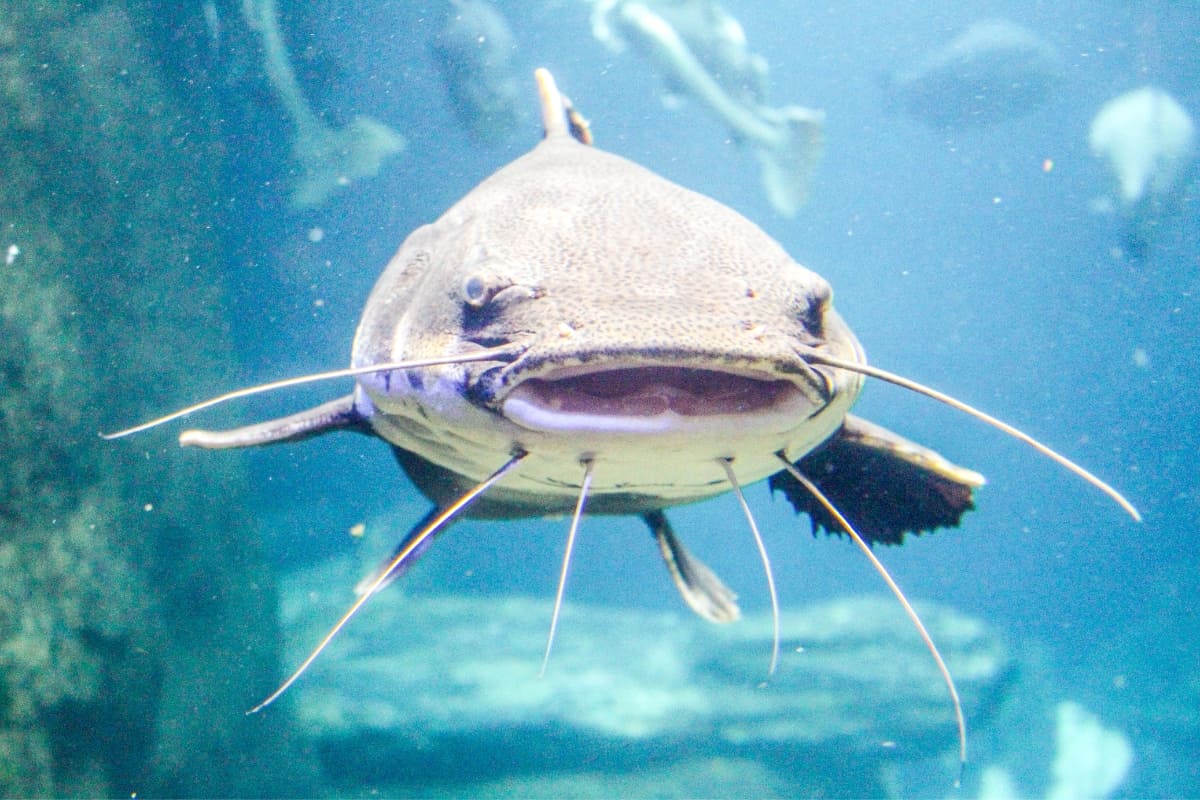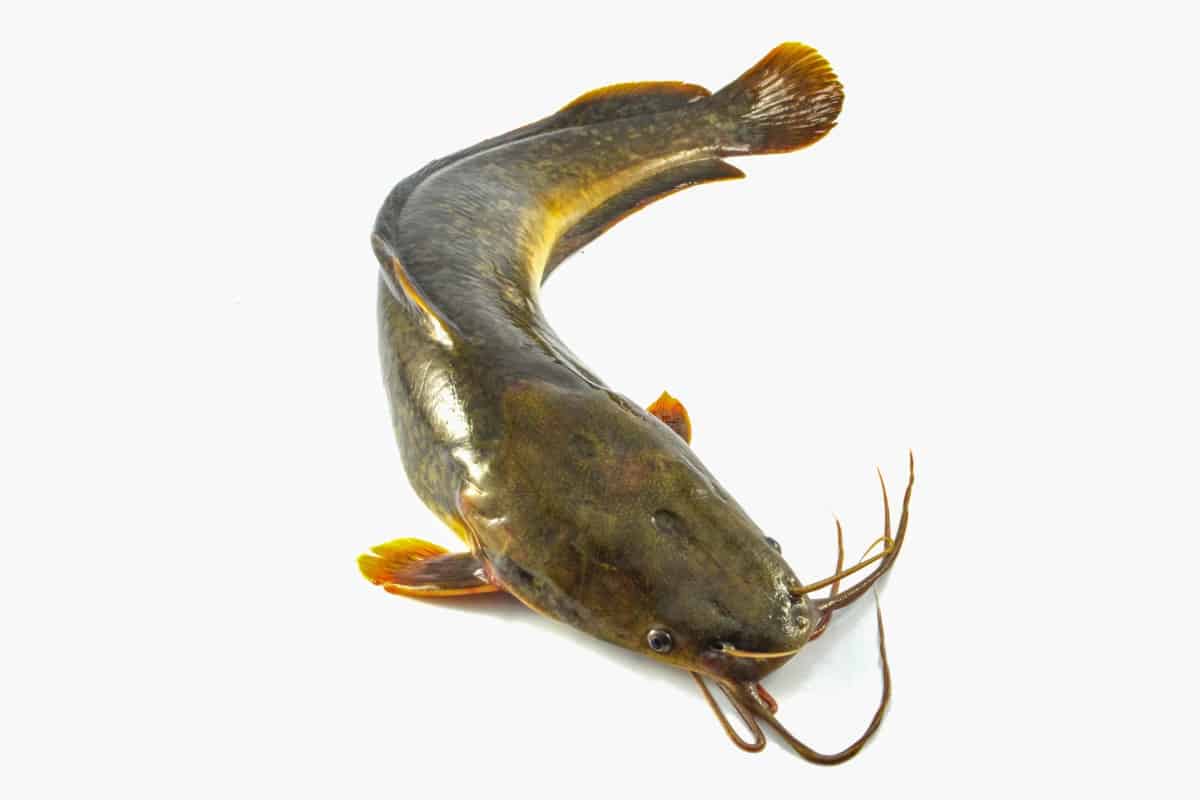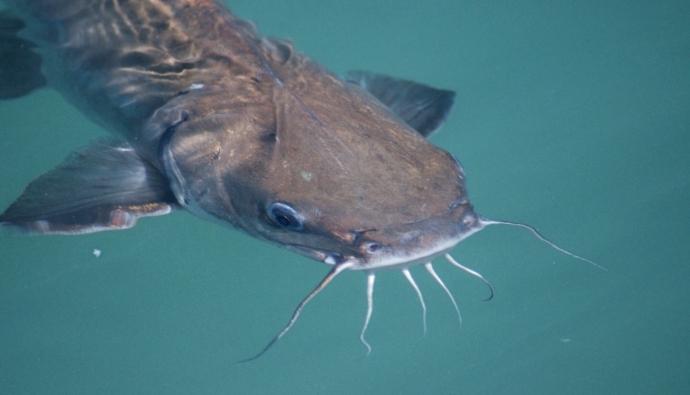Have you ever watched a catfish wriggle on land and wondered how long it can survive without taking a dip? The answer might surprise you.
Believe it or not, most catfish species can live out of water for a considerable amount of time – up to a few hours or even days in certain conditions. But remember, just because they can, doesn’t mean they should. Our finned friends prefer to be in the water, and it’s up to us, whether we’re fish keepers or anglers, to respect that.
In this article, we’ll dive deep into the world of catfish, exploring the unique adaptations that allow them to live outside of their watery homes and understand how long can catfish live out of water. We’ll also talk about how different factors like their species, size, age, and the surrounding environment affect their survival.
But that’s not all. We’ll share some tips and tricks on handling these fascinating creatures responsibly. So grab your fishing hat, and let’s get started on this underwater adventure!

How long can catfish live out of water?
Isn’t it surprising that a creature from the underwater world can survive on dry land? Well, that’s our extraordinary catfish for you.
So how long can catfish survive out of water? Depending on the species and conditions, a catfish can live outside of water for a few hours to a few days. But how do they manage this impressive feat? Catfish breathe air.
The secret lies in their unique ability to breathe. They are one of the very few fish species that can breathe outside the water.
Unlike us humans who breathe air or dolphins who pop up for a quick breath before diving back down, catfish survive with an adaptation that allows them to breathe both in water and out of it. This adaptation is their specialized gills, equipped with a maze-like structure called a labyrinth.
True to its name, the labyrinth is a complex network of thin, bony plates.
These plates, moist with a layer of mucus, can absorb oxygen directly from the air. When a catfish is out of the water, it gulps in air, which passes over the labyrinth, supplying much-needed oxygen to the fish. It’s like having tiny, built-in scuba gear!
But remember, while this allows catfish to survive out of the water, it doesn’t mean they thrive. They are, after all, fish species and their natural habitat is water.
How long can catfish live?
Catfish are not just remarkable for their ability to breathe outside of water; they’re also known for their impressive lifespan.
In the right conditions, some catfish live a long, average life expectancy of 15 to 20 years!
Take, for instance, the Channel Catfish. These remarkable catfish live up to a whopping 20 years! There’s also the Flathead Catfish that can live up to 24 years.
And let’s not forget about the littlest of them all, the adorable Corydoras Catfish. Despite their pint-sized stature, these catfish live up to 15 years. They’re a beloved addition to home aquariums worldwide, bringing joy to fish enthusiasts for a decade and a half with their lively antics and charming personalities.
But what about the walking catfish? The walking catfish is an extremist. It has a long lifespan swimming in the water, but it can also survive for a short period outside the water.
How long can catfish stay out of the water without dying?
It’s fascinating to know that a catfish, a creature of the water, can actually live outside of it for a remarkable amount of time. In fact, a catfish can survive out of water for up to 15 hours, depending on the conditions!
Let’s dive deeper into this intriguing ability of catfish.
Imagine you’re a catfish, gliding through the water with your whisker-like barbels detecting food, your slick body easily moving through the murky depths. Now, imagine you suddenly find yourself out of water. But instead of gasping hopelessly, you’re breathing. You’re surviving! How is this possible?
The secret lies in the catfish’s unique biology.
These wonderful creatures are equipped with a specialized structure called the labyrinth organ. This amazing organ allows them to breathe in air, a bit like how we humans use our lungs. They can draw oxygen straight from the air and survive for extended periods out of the water as long as they remain moist.
However, it’s not all about the oxygen.
Catfish are masters at conserving energy. When out of their watery home, they slow down their movements and bodily functions. This state of slowed metabolism, similar to hibernation in mammals, helps them to use less oxygen and thus prolong their survival time on land.
How do you keep catfish alive after catching it?
Catching a catfish is a thrilling experience! But what comes next?
How can you keep your freshly caught catfish alive and well? It’s simpler than you might think, and with a little care, your catfish can remain healthy for a few hours after being caught.
The very first step to keeping the catfish alive is to ensure that it is handled properly.
Catfish, with their smooth, scale-less bodies, are more delicate than they look. Imagine cradling a whiskered, slippery catfish in your hands. You’ve just reeled in this fascinating creature, and now it’s time to ensure its well-being.
Start by gripping the fish firmly, yet gently, with your hands dampened by the surrounding water. This prevents damage to their sensitive, scale-less skin. Watch out for that spiky dorsal and pectoral fins – they’re sharp and can give you a nasty surprise if not treated with respect.
Next, think of the perfect temporary house for your whiskered friend.
It could be a well-aerated live well or a cooler brimming with water. This is where your catfish will be staying for a while, so it’s essential to make it cozy. Some live wells have oxygenators that can keep fish alive much longer.
The water must be clean and cool – remember. Most catfish aren’t fans of a hot bath. A handy air pump or bubbler is just the ticket to keep the oxygen levels up and the water quality tip-top.
Do you recall our chat about the remarkable survival technique of catfish?
Their ability to gulp in the air means they can tough it out in a low-oxygen environment. But let’s be honest. They’d much prefer an atmospheric oxygen-rich setting. It’s like us having to live on only a few breaths of air – not the most comfortable scenario!
Now, picture yourself plunging into a chilly swimming pool after being in a warm room – quite a shock.
That’s exactly how a catfish feels when it’s introduced to water that’s a different temperature from its original habitat. So, it’s crucial to match the water temperature in the cooler or live well with that of the water temperature where the catfish was caught.
And here’s the final piece of advice: avoid overstuffing the cooler or live well.
Think of it as a party – too many guests and it gets uncomfortable, right? If you’ve been lucky and caught a good number of catfish, it’s better to divide them into separate containers. Crowding can stress out the fish and reduce the available oxygen, posing a danger to their survival.
Adopting these steps helps keep the fish alive and in the pink of health after being caught, whether you plan to release or take them home.
Do catfish survive catch and release?
The good news is, yes, they do! These sturdy fish have an impressive survival rate post-catch and release. However, the catch (no pun intended this time) is that their survival largely hinges on your care and handling during the process.
Consider yourself a fisherman doctor. Your task is to make sure the catfish return to their watery home as healthy as possible. And just like a doctor, there are best practices you need to follow.
Aim to limit the time the catfish spend out of water. Despite their out-of-water survival abilities, catfish are healthiest when they’re in their natural aquatic environment.
Also, handling the catfish demands care. After all, they might be tough survivors, but they still need our kindness and respect.
Their bodies may be tough, but they’re not invincible. Handle them with wet hands to protect their skin, and watch out for those sharp fins.
Also, be careful when removing the hook.
If it’s deeply embedded, it might be best to cut the line close to the hook and release the catfish. Over time, the hook will rust and fall out.
Lastly, release the catfish gently into the water.
Don’t just toss it in, but rather allow it to swim out of your hands. This gives the fish a gentle transition back into its natural environment.
By following these simple practices, you’re doing your part in ensuring that the catfish not only survives the catch and release process but thrives afterward. Now that you know how long can catfish live out of water, the next time you cast your line and feel the tug of a catfish, remember these tips to make sure your aquatic friend gets back home safe and sound. Happy fishing and happy releasing!





 Facebook
Facebook YouTube
YouTube









